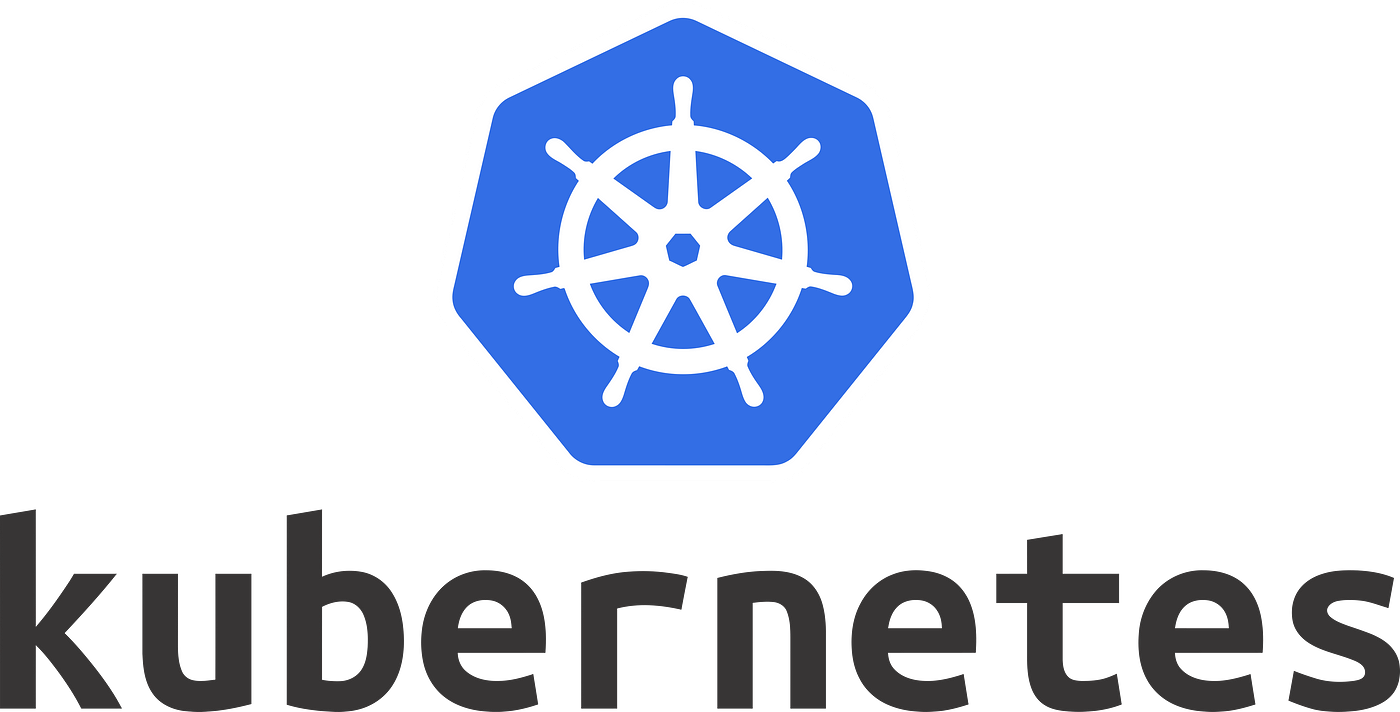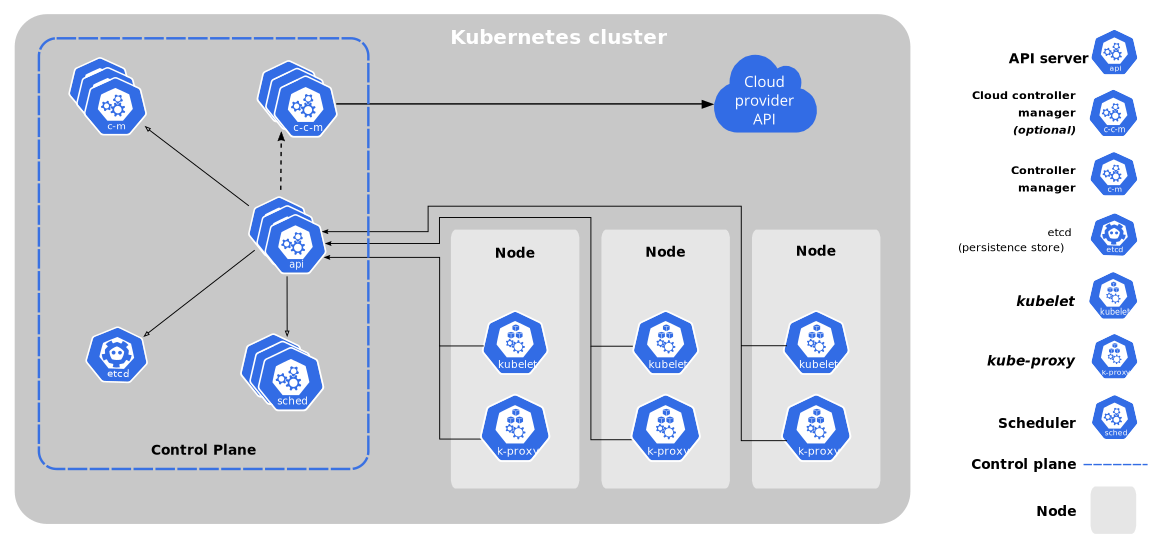Originally designed by teams at Google and released in 2014, Kubernetes is now officially maintained by the Cloud Native Computing Foundation. Kubernetes has quickly turned into the gold-standard of container orchestration for several reasons: the wide community support, the fact that it is cloud-agnostic (kind of… see more about plugins below), and it offers production-grade orchestration.
The following is a dive into what Kubernetes is, how it works, common Kubernetes terms defined, and details on how developers are using Kubernetes to build and scale.
What is Kubernetes?

Kubernetes comes from the Greek word for “helmsman,” (someone who steers a ship, like a container ship), which explains why the iconic symbol for Kubernetes (or K8s) is a ship wheel. Kubernetes is an open-source container orchestration tool, that allows developers to quickly and easily deploy, scale and manage containerized applications.
Here’s another way to think about it: Kubernetes is a tool that allows you to manage all cloud computing, treating them as 1 giant resource pool instead of multiple instances. Instead of having several servers running with various CPU and memory resources (which you may not be using to full capacity of the CPU power and memory pool), Kubernetes will try to optimize the allocation of all compute resources, utilizing the ones you are paying for to the fullest.
Kubernetes is a fan-favorite thanks to some key differentiators:
-
Self-healing
Let’s say we deploy a container and we always want 2 instances of it running. Kubernetes will monitor and make sure there are always 2 running. If one was to ever crash it will then spin up a new instance to ensure your desired state of 2 is running.
-
Scalability
if we decide that we always want 5 instances running instead of 2, we can have 5 copies of that instance running instead of 2 within a few keystrokes. This is possible only IF there are enough worker node resources to support this…but if you have the cluster autoscaler, it will automatically deploy a new worker node, if needed.
-
Bin packing with Kubernetes
Allows for defining how much CPU and RAM your container will need. Kubernetes will ensure the container has the requested resources available, which will then select the appropriate worker node. This can lead to cost reduction as you don’t waste CPU/Memory.
-
Load balancing with Kubernetes
If you have multiple containers of your application running then Kubernetes will distribute traffic across those containers.
-
Kubernetes service discovery When you deploy your containers, you can expose them through a Kubernetes type called a service, which behaves like DNS. This allows your containers to easily communicate with one another.
How does Kubernetes work?
Kubernetes works by deploying a master node containing the control plane. The control plane has various components such as:
- ETCD: This a key/value store that contains all of your clusters configurations
- Kube Scheduler: This looks at your requested configuration and determines the best place for it
- Kube Controller Manager: The controller watches the state within your cluster and works toward ensuring that the desired state you have defined is the one present.
- API-Server: This is the heart of your cluster. All components within the control plane and outside of the control plane communicate with the API server.

While the control plane acts like the brain of the operation, the worker nodes are where you would deploy applications. The worker node then communicates back to the control plane, with a few components that run on the worker node itself.
- Kubelet: This is considered the “Node Agent” it registers the worker node to the control plane and also manages pods on its given node.
- Kube Proxy: This is a network proxy that runs on each worker node and manages network configuration across your cluster.
- Container Runtime: Which container runtime your cluster is using depends on the cloud provider. A popular runtime is ContainerD.
Kubernetes plugins
Since Kubernetes is cloud-agnostic, each provider is responsible for offering two core plug-ins. These are vital in order to gain the full benefits of the cloud you’re running on:
Other Kubernetes Plugins to consider:
Common Kubernetes terms defined
Before running with Kubernetes, there are some key terms to understand:
- Kubernetes cluster: a set of nodes that run containerized applications.
- Kubernetes operator: an extension to Kubernetes that lets you build your own custom resources.
- Kubernetes node: a worker node, either virtual or physical, depending on the cluster.
- Kubernetes pod: the smallest, most basic deployable object in Kubernetes. A pod holds containers. A pod can hold 1 or more containers.
- Kubernetes secrets: let you store and manage sensitive information, such as passwords, OAuth tokens, and ssh keys.
- Kubernetes service: used if you want to expose a deployment/pod(s) to be accessible from within the cluster (or outside)
- Kubectl: the Kubernetes command-line tool that allows you to run commands against Kubernetes clusters
- Minikube: a tool that lets you run Kubernetes locally.
How are developers using Kubernetes?
With the rise of Microservices, Kubernetes has risen in popularity as it allows developers to easily build distributed applications. Microservices provide a way to build and deploy applications. Instead of building single large “monolithic” applications, you build small “bite-size” applications that do one thing and one thing well. You then have multiple applications that work together but are separate. Since these components are independent of one another, you can scale certain applications up as needed.
For Example: During Black Friday, you may want to spin up more instances of your POS systems to handle the influx of transactions. In a “traditional” application you would have to deploy multiple instances of the entire application, which can be wasteful.
As with Kubernetes, CI/CD (Continuous Integration/Continuous Delivery) also lends itself to microservices. You can completely automate application deployments. Consider this example: You could have a CI/CD pipeline that will build your application into a container and then update the Kubernetes configuration to use this latest container all from just commit code to your repository.
Another example involves using Kubernetes to easily schedule batch jobs. In this use case, you are able to schedule workloads to run at certain times that fit your needs. With Kubernetes since these are containers, this will be deployed, do its job, and then be removed. You don’t have to worry about having a dedicated instance just for this batch job Kubernetes will ensure that your jobs run when you want them to.
Overall, there are two main advantages of microservice design:
- Efficiently manage clouds resources (potential cost savings)
- Scale specific portions of an application independently